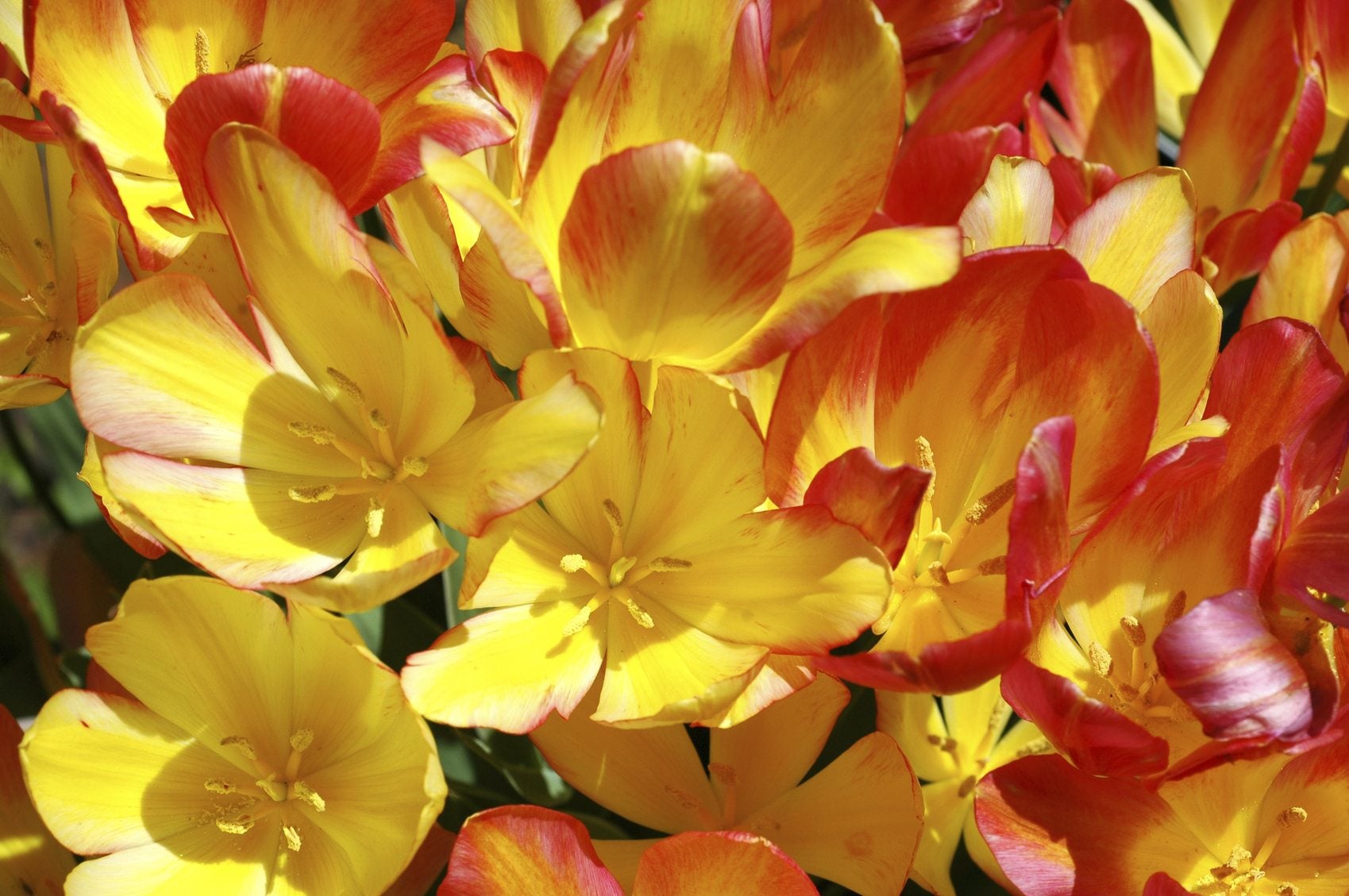Multi-Headed Tulips Varieties – Learn About Multi-Headed Tulip Flowers


Every gardener is antsy over winter waiting for the first kisses of spring sunshine and its attendant flowers. Tulips are one of the favorite spring bulb varieties and they come in a glaring assortment of colors, sizes, and petal forms. Many bulbs just produce one to three stems, but multi-flowering tulips can produce four or more flowering stalks. What are multi-headed tulips? These flowers give you more value for your dollar and produce a bouquet from just a single bulb. Choose from dozens of multi-headed tulip varieties and spice up your spring color display.
What are Multi-Headed Tulips?
Multi-headed tulip flowers are showstopping forms mostly derived from single late and botanical flowers. These bulbs can be a bit difficult to locate, but it is definitely worth the effort since the plant produces many more blooms than traditional tulips. There are many lovely types of multi-headed tulips from which to choose. The expanded color display is eye-popping, and most can be planted quite late and still expect a bloom. Envision the large sword-like green leaves arching out around a few single stems that branch out into several tulip flowers. These plants naturally divide the main stems into three or more separate flower heads. Forms range from multi-toned to some with variegated foliage. The most common is probably 'Antoinette,' which produces three to six flowers clustered together amidst the greenery. The blooms change color as they age, going from buttery yellow to pink as they mature. Bulbs are generally quite large, and plants can grow 12 to 18 inches (31-46 cm.) tall. These tulips are excellent as cut flowers and last a considerable time.
Types of Multi-Headed Tulips
'Antoinette' isn't the only outstanding member of the group.
- Thick clusters of virginal white tulips are borne on several stems with "White Bouquet."
- A more colorful representative might be "Florette," tiger striped gold and tomato red.
- "Aquila" is a sunny yellow type with barely red kissed petal tips.
- "Estactic" is a double petal form in rich crimson.
- The variety "Nightclub" has all the flamboyancy of a flamenco dancer in shocking pink.
- Another one of the multi-headed tulip varieties, "Merry Go Round," may be found in either purple or lipstick red.
- Several hues are involved with "Belicia," a tulip that buds creamy ivory yellow and opens white with a rim of red at the petal tips.
Growing Multi-Headed Tulip Flowers
Multi-flowering tulips are cultivated much like other tulips. They bloom around May and should be planted in fall before the first frost. These tulips are hardy in USDA zones 3 to 8, so they rarely need lifting unless you live in the Arctic tundra. Prepare a good soil in the appointed bed by deeply tilling and mixing in some compost. Avoid sowing in low, potentially boggy areas of the garden. Plant bulbs 6 to 8 inches (15-20 cm.) deep, 6 inches (15 cm.) apart and incorporate some bone meal into the planting hole at installation. As with any bulb, cut off spent blooms but leave the foliage intact to feed the bulb for the next season's intense flower display.
Sign up for the Gardening Know How newsletter today and receive a free copy of our e-book "How to Grow Delicious Tomatoes".

Bonnie Grant is a professional landscaper with a Certification in Urban Gardening. She has been gardening and writing for 15 years. A former professional chef, she has a passion for edible landscaping.